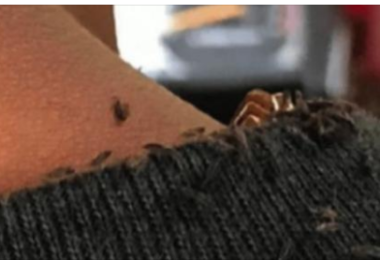Cheryl Murray endured a painful, growing lump on her foot for ten years of her life. Out of embarrassment, she withheld it from her lover for two years. After they moved in together, the bulge, which was now the size of a golf ball, was no longer concealable. Just in time, he advised her to have it evaluated as well.
Cancer was discovered to be a lump. Murray first noticed the unpleasant lump forming on her foot when she was only 15 years old. When she visited her doctor, he advised physiotherapy for her.
They assumed she had torn a ligament after slipping and falling. But during the course of the next ten years, the lump grew somewhat more. It grew until it was the size of a golf ball when something bumped it, and it hurt her terribly.

David, her husband at the time, and she afterward began dating. She hid it from him since she felt bad about it. Before they moved in together, she had no idea that she could no longer keep up the pretense. She showed him the bulge, and he suggested she go back to the doctor for a possible explanation.
David enquired as to the condition of my foot. He could see it wasn’t a torn ligament when I said it was, and that it was more serious, she recounted.
Everything changed on that day.
A doctor recommended an MRI scan, biopsies, and an X-ray after Murray saw him. The surgeon then described the findings to her and gave her the two worst pieces of news anyone could possibly hear: Sarcoma was the type of cancer that she had. They would need to amputate her lower leg as soon as possible to stop the malignancy from spreading.
“I was inconsolable. I was speechless from shock, Murray admitted. I had the sensation of receiving two punches to the face in one day.
She was with her boyfriend David the whole time. He even made a marriage proposal to her just a few weeks before her amputation. Murray claims that she thanks him for helping her survive the incident. He gave her the drive and willpower to keep going.
Sarcoma of the connective tissue is a rare kind of cancer that affects soft tissue, including muscles, tendons, and fat. The body’s neurons, blood vessels, bones, cartilage, and other tissues may also be affected.
Cells in the connective tissue that envelops bones, muscles, and other connective tissues give rise to tumors known as sarcomas. Their physical characteristics and places are dissimilar from one another. Sarcomas are cancerous tumors that can appear anywhere on the body, but they typically begin in the arms or legs.
Why Do Sarcomas Develop?
Adults are more likely than children to develop malignant malignancies, despite the fact that their exact cause is uncertain. Additionally, those who have received radiation or chemotherapy for previous cancers are more prone to develop them.
The three most common types of bone sarcomas are osteosarcoma (bone cancer), chondrosarcoma (cartilage cancer), and Ewing’s sarcoma (cancer that begins in the bone marrow). The majority of patients are between the ages of 15 and 30 when these tumors are found. Age increases the risk of osteosarcoma, which is more common in adults than in youngsters.
What Signs Are There?
Symptoms can vary depending on where the tumor is located. There may be discomfort, swelling, a lump, or mass under your skin in one or more areas of your body. The most frequent symptom is pain, which can range from mild to severe. Other indications include:
One particular area of your body swelling (particularly if it persists)
Bone malformation, such as a persistent hump or bump on your bone
weakness in a single body part, such as a leg or arm
walking or going around with difficulty
a shift in your walking style
loss of strength and muscle mass

Murray had the good fortune to outlive her illness and get to plan her wedding to the love of her life. This incident is simply another reminder to always look for solutions anytime you suspect a problem or encounter ongoing discomfort or misery.
If the first suggestions don’t seem correct or aren’t useful to you, keep looking. Act as your own greatest advocate and get the help you need. Your life could be in danger.








Leave a Comment